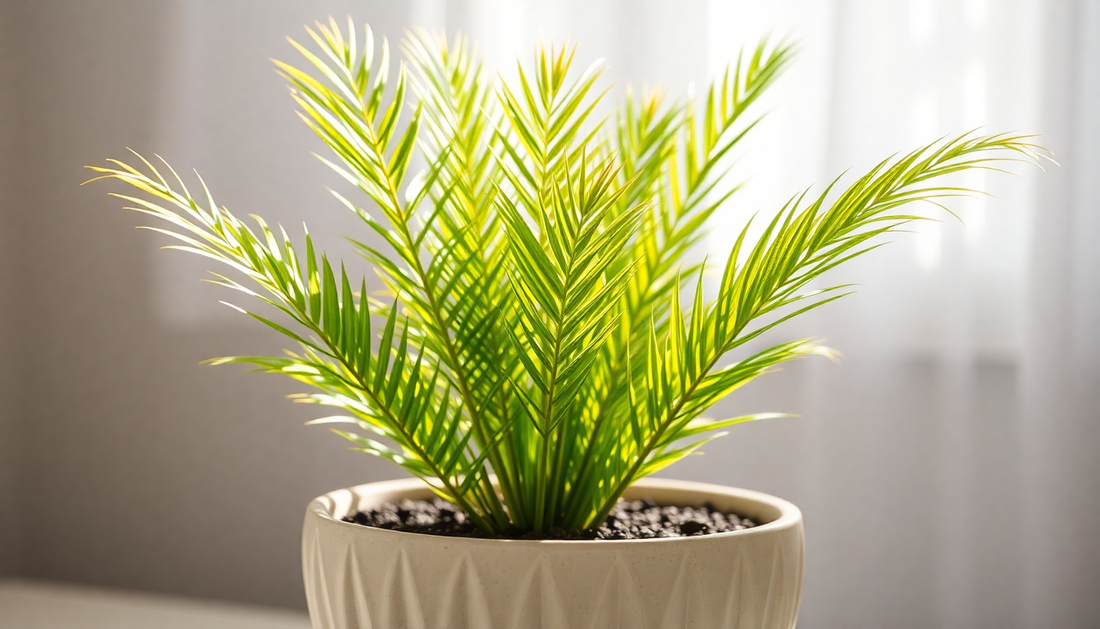
The Best Potting Mix for Parlor Palm
As a proud owner of a parlor palm, I know how important it is to provide the right soil conditions for this beautiful and resilient indoor plant. Parlor palms, also known as Chamaedorea elegans, are a popular choice for homes and offices due to their lush, tropical foliage and ability to thrive in a variety of indoor environments.
However, finding the perfect potting mix for your parlor palm can be a bit of a challenge. With so many options on the market, it can be overwhelming to determine which soil is best suited for this unique plant. In this blog post, I'll share my insights on the key factors to consider when selecting the ideal potting mix for your parlor palm, as well as some of the best soil options available.
Understanding the Parlor Palm's Soil Needs
Parlor palms are native to the tropical regions of Mexico and Central America, where they grow in the understory of lush, humid forests. In their natural habitat, these plants thrive in well-draining, nutrient-rich soil that retains moisture but also allows for adequate aeration.
When it comes to growing parlor palms indoors, it's important to mimic these conditions as closely as possible. The ideal potting mix for a parlor palm should have the following characteristics:
Excellent Drainage
Parlor palms are susceptible to root rot if their soil becomes waterlogged. The potting mix should have a high proportion of coarse, fast-draining materials, such as perlite, vermiculite, or sand, to ensure that excess moisture can easily drain away.
Moisture Retention
While good drainage is crucial, the soil should also have the ability to hold onto some moisture, as parlor palms require consistently moist (but not soggy) soil to thrive. The addition of organic matter, such as compost or peat moss, can help the soil retain moisture without becoming waterlogged.
Nutrient-Rich
Parlor palms are heavy feeders and require a steady supply of nutrients to support their growth and lush foliage. The potting mix should be enriched with slow-release fertilizers or organic matter that can provide a balanced and sustained release of essential nutrients.
Aeration
In addition to good drainage, the soil should also allow for adequate air circulation around the roots. This can be achieved by incorporating materials like perlite, bark, or even small pieces of charcoal into the potting mix.
The Best Potting Mixes for Parlor Palms
Now that we've established the key criteria for an ideal parlor palm potting mix, let's explore some of the best options available:
Tropical Plant Mix
A high-quality tropical plant mix, such as those formulated specifically for indoor palms and other lush, tropical foliage plants, can be an excellent choice for parlor palms. These mixes typically contain a blend of peat moss, compost, perlite, and other ingredients that provide the perfect balance of drainage, moisture retention, and nutrient availability.
Moisture-Retaining Soil
For parlor palms that may be prone to drying out, a potting mix that is designed to retain moisture can be a great option. These mixes often contain a higher proportion of organic matter, such as coco coir or sphagnum peat moss, to help the soil hold onto water while still maintaining good drainage.
Organic Gardening Solutions
If you prefer a more natural approach, you can create your own custom potting mix using organic materials. A blend of compost, perlite, and vermiculite can provide the ideal soil conditions for parlor palms, while also being free of synthetic fertilizers or other potentially harmful additives.
Regardless of the specific potting mix you choose, it's important to ensure that the soil is well-draining and nutrient-rich to support the long-term health and growth of your parlor palm. Regular monitoring and adjustments to the soil moisture and fertilization schedule may also be necessary to keep your plant thriving.
Conclusion
Selecting the right potting mix is a crucial step in providing your parlor palm with the optimal growing conditions. By considering factors like drainage, moisture retention, nutrient content, and aeration, you can ensure that your parlor palm has the best possible foundation for a long, healthy life in your home or office.
Whether you choose a pre-made tropical plant mix, a moisture-retaining soil, or create your own organic blend, the key is to find a potting medium that closely mimics the natural habitat of the parlor palm. With the right soil conditions, your parlor palm will reward you with its lush, vibrant foliage and a touch of tropical elegance in your indoor space.
Happy gardening!







No comments